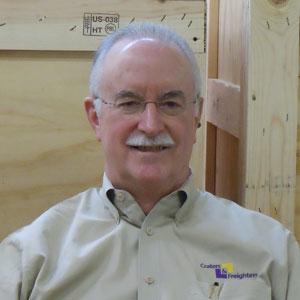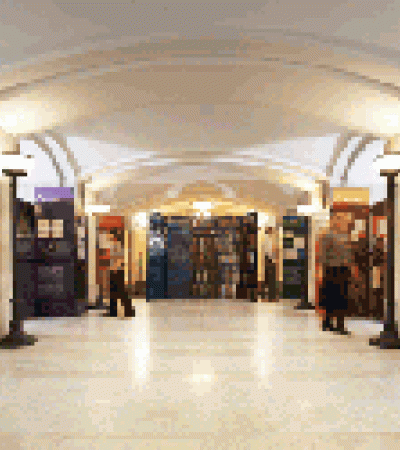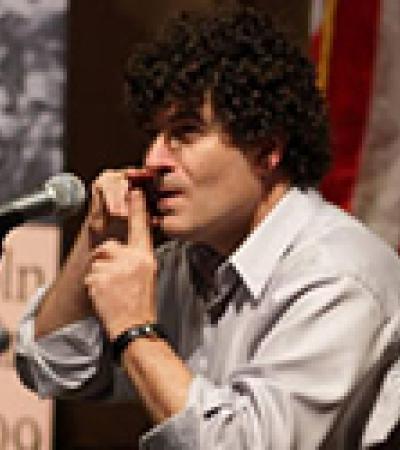Editor’s note: Join us for another behind-the-scenes look at traveling exhibitions at the ALA Public Programs Office. Today, we find out how exhibitions get where they are going. Previous interviews include Q&A with Dr. Steve Frank, Curator of “Lincoln: The Constitution and the Civil War”, Q&A with Pat Chester, Traveling Exhibition Designer, and Q&A with Beth Prindle, Curator of “John Adams Unbound.”

Gordon Paul has been the owner of Craters & Freighters of Chicago, a specialty shipping company that deals with the packaging and shipping of fragile and one-of-a-kind cargo, for the past sixteen years. Craters & Freighters first became involved with the American Library Association three years ago, when graphic designer Pat Chester asked for advice on packaging solutions for the “Visions of the Universe” exhibit, and since then Craters & Freighters has been involved with three additional exhibits, one of which, “Manifold Greatness: The Creation and Afterlife of the King James Bible,” is on-going.
Programming Librarian: You have served as our shipper for a number of ALA traveling exhibitions. Tell us about your process—what exactly does an exhibition shipper do? Are there any special considerations you need to keep in mind when handling traveling displays?
Gordon Paul: There are two primary considerations in shipping anything, including the ALA exhibits. The first is the packaging of the exhibit, and the second is the shipping of it.
The purpose of all packaging is to protect the contents of what is being shipped. How best to do that involves a number of factors, including packaging costs, the selection of the shipping method, and the ease of handling at the pickup and delivery locations. For the ALA exhibits for which we have designed the packaging, we first considered wooden shipping crates but ruled these out primarily because of the need for the containers to be easily handled by one person at each library. Instead we designed heavy-duty corrugated containers with inner foam cushioning to protect the edges of the panels being shipped, and these have been remarkably successful, each container successfully making up to eight shipments.
The primary consideration regarding selection of the shipping method is to make sure the shipments arrive at the next venue on time, while keeping shipping costs down.
PL: What’s your secret—how do you coordinate the delivery of multiple exhibits to multiple host libraries all across the country and deliver the displays on time?
GP: For the most part, due to the relatively short time frames we are dealing with between shipments, we rely on air carriers to move the shipments. In addition, we always check with the receiving libraries to be certain that we have their correct addresses and to make sure we understand what their individual delivery requirements will be. For example, some libraries may have only ground-level access while others, at colleges and universities for the most part, have loading docks. It is important for us to tell the carrier when the shipment is scheduled whether or not the two locations involved will have a dock or will require a ground-level pick up or delivery so that the carrier knows what kind of truck to send. Finally, it has been our good fortune to have always had the full cooperation of the libraries involved in moving the shipments.
PL: Are there any behind-the-scenes aspects of your work that readers might find surprising?
GP: Even though what is being shipped remains the same within a given exhibit, each shipment nevertheless has its own “peculiarities” that keep us on our toes. For example, even though our “standard deferred” shipment method has a typical delivery time of three working days, if either of the two libraries involved with the shipment is in what the carrier considers a “beyond point,” the actual number of days the shipment takes will increase, sometimes resulting in some additional anxiety on our part that the shipment is delivered in time.
PL: Is there an ALA traveling exhibition that you particularly enjoyed working with? If so, why?
GP: All have been different in their own way. The Nextbook exhibit was interesting because there were three different exhibits, and twenty-two copies, that had to move to twenty-two different locations, not necessarily at the same time. This demanded our most careful attention in order to keep it all straight.
PL: Is there anything host libraries can do to help keep the shipping process flowing smoothly?
GP: As above, all the libraries have been most helpful keeping things moving for all of the shipments. They have been able to repack the exhibits in a timely fashion for the outgoing shipments, have been helpful in keeping us updated as necessary regarding any changes in contact information, and helpful in letting us know if there has been any damage to the exhibits or the packaging materials when they arrive.



